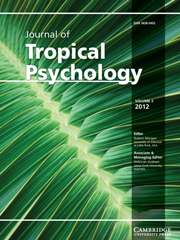Article contents
Healing through ICT: Enhancing wellbeing in an Aboriginal community
Published online by Cambridge University Press: 10 December 2012
Abstract
Many Aboriginal Australians report a diminished sense of wellbeing in their everyday activities due to racism and separation from their traditional lands and culture. Our research sought to discover whether access and use of culturally appropriate Information and Communication Technology's (ICTs), could have an ameliorative benefit, enhancing participants’ sense of support and engagement with their culture. While multiple studies have shown that access and use of ICTs can provide real benefits in regards to empowerment, few studies have focused specifically on the well-being aspects. The research in this project was a Participatory Action Research (PAR) study with women and girls of the Gugu Badhun (an Aboriginal Australian language group) to explore ways to better support their familial and cultural activities associated with identity and group sustainability. The research was divided into three action-research cycles: group interviews and focus groups, use of a technology probe, and feedback from the participants. The technology probe was a web-based application with access limited to the women in the study. Use of the probe enabled the participants to mentally revisit scenes that had been highly significant to them and to reframe these incidents in ways that enhanced their feelings of wellbeing. The probe site allowed the women a platform to discuss concepts intrinsic to their lives, and how these ideas interlink and enmesh with each other, such as the importance of connection to country, and offline activities surrounding identity and sustainability as a group thereby enhancing their wellbeing.
- Type
- Articles
- Information
- Copyright
- Copyright © The Authors 2012
References
- 4
- Cited by




